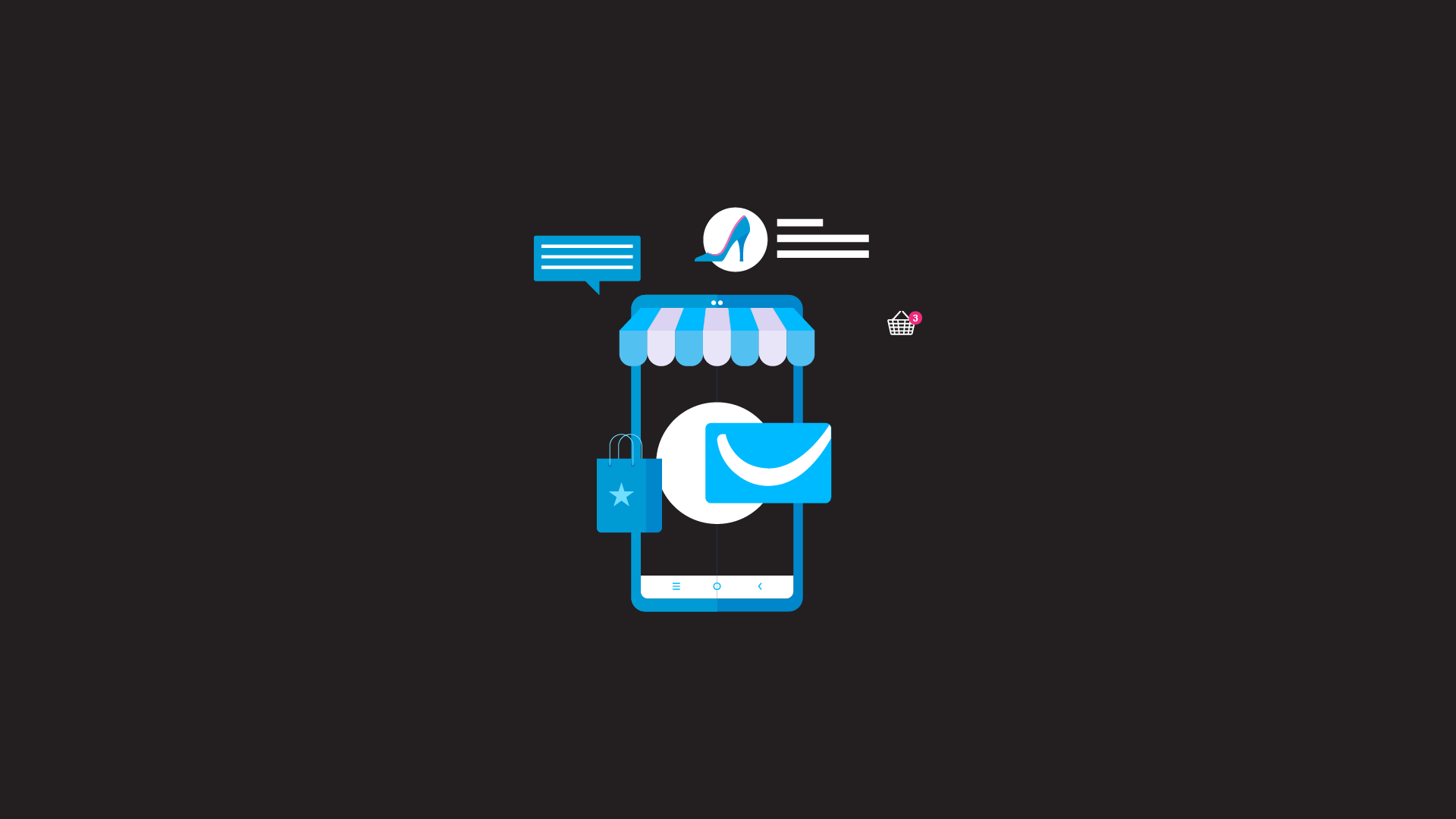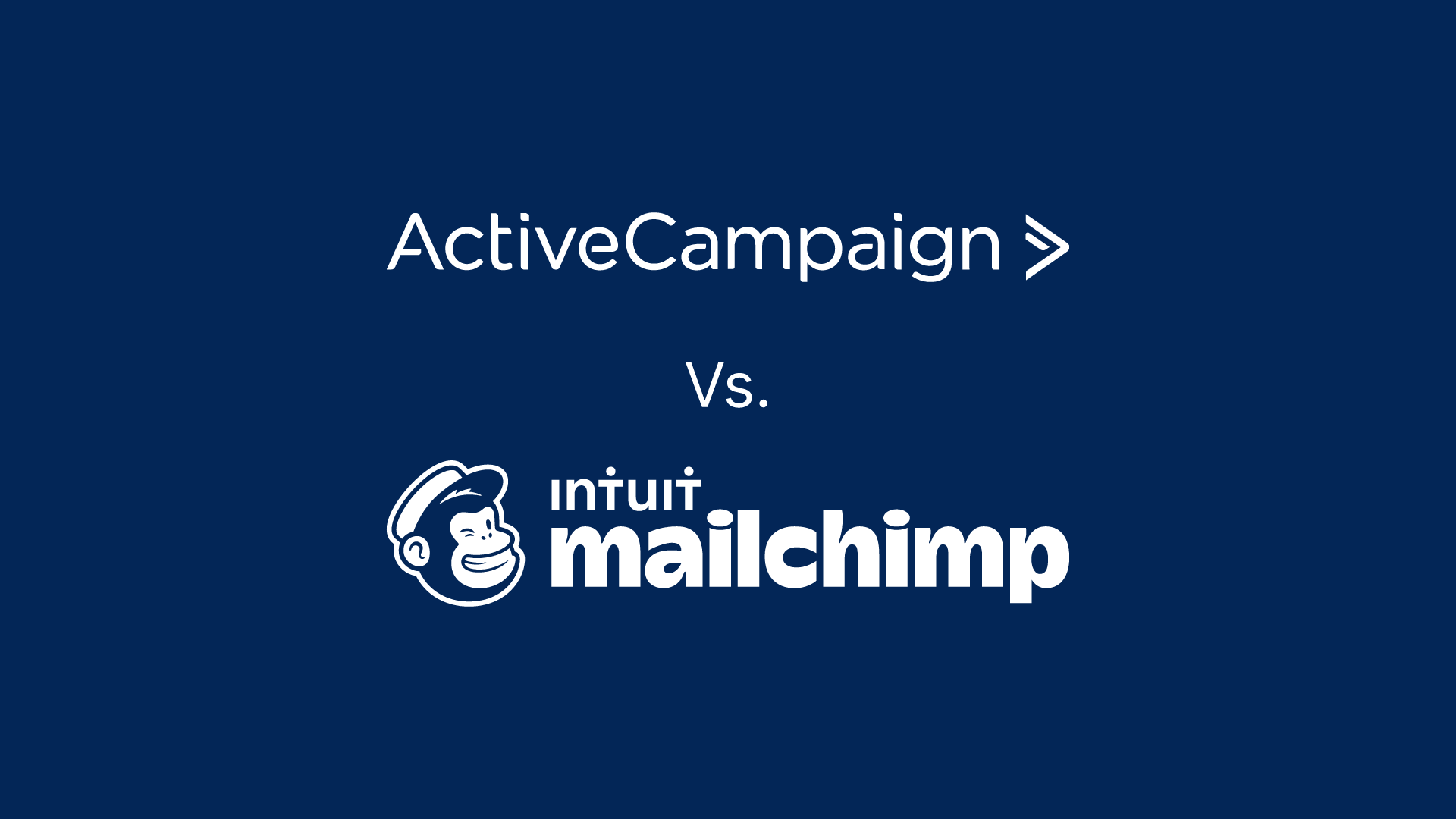Email marketing is one of the oldest and most effective messaging channels, which means it can still bring your business great leads and sales.
Have you ever thought about including an email marketing budget as a part of your marketing strategies? In our opinion, everyone should. Email marketing campaigns receive high conversion rates, help build loyalty, and boost sales time and time again.
Curious about the benefits of sending out an email newsletter? Wondering how to craft the perfect message with the right offers? No worries.
We’ve put together this list of amazing email marketing stats, and statistics for the year 2022 that can prove just how profitable (and effective) email marketing can be. The latest email marketing statistics provide valuable insights into metrics like open rates and ROI, helping businesses refine their strategies and improve engagement with their audiences.

According to Statista, The global e-mail marketing market was valued at $7.5 billion in 2020 and is expected to reach $17.9 billion by 2027.
There are 4 billion daily email users. This number will go up to 4.6 billion by 2025. (Statista, 2021)
More than 306 billion emails are sent and received each day. (Statista, 2021)
Active email accounts surpassed 5.6 billion in 2019. (Statista, 2019)
Only 64% of small businesses use email marketing to reach customers according to Campaign Monitor
For every $1 spent, email marketing generates $42 a high return on investment of 4200%
About 1 in 5 email campaigns is not optimized for mobile devices.
According to statistica, 66% of marketers believe AI is a way to optimize send times.
Email marketing is 40% better at converting than Facebook and Twitter.
Email Marketing Overview
Email marketing is a crucial aspect of digital marketing, allowing businesses to connect with their audiences and drive conversions. Marketing emails are highly effective, with optimal timing for sending being Tuesdays at noon to achieve higher open and click-through rates. With 4.48 billion email users worldwide, it’s no wonder companies continue to invest in email marketing software.
In fact, 81% of companies use email as part of their marketing strategy, and 64% of small businesses use email marketing to reach their customers. This widespread adoption underscores the importance of email marketing in building customer relationships and driving business growth.
B2B Key Email Marketing Statistics
Perhaps email marketing’s biggest selling point is its potential to convert. Businesses of all sizes use this form of marketing because, well, it works! Key email marketing statistics highlight various performance metrics such as open rates, click-through rates, and the impact of your message personalization, emphasizing the effectiveness of email marketing as a first-party channel for customer engagement and retention.
Here are some interesting statistics on the widespread popularity of email marketing that prove just how effective it can be for driving relevant sales activity.
About 93% of B2B marketers use email channels for distributing content according to CMI.
81% of B2B marketers say email newsletters are the most used form of content marketing.
Email marketing is at the top of 87% of marketer’s top organic distribution channels.
Email engagement is a top metric to track according to 90% of content marketers.
B2C Email Marketing Statistics
Customer email preferences are changing. B2C e-commerce, and consumer goods and services companies are taking a personalized approach to customer insights as part of a great email marketing strategy.
It’s now a normal practice to personalize emails based on past purchase behavior. Here are some, interesting statistics that talk about the impacts of this new marketing strategy
According to a recent study, companies that personalize emails are 32% more likely to see a conversion than those that don’t.
A study by statistica revealed that 45% of internet users avoid opening emails from unknown senders.
About 8 in 10 people will open a welcome email. This generates 4x more opens and 10x as many clicks as other emails.
Mobile Email Marketing Statistics
For all the praise email marketing campaigns have received, some marketers still underestimate the importance of mobile optimization.
When you consider mobile email marketing statistics, such as the high number of subscribers checking their emails from mobile devices even when they’re at work, it is easy to see why mobile optimization is so vital to the success of your email marketing campaign.
If you aren’t optimizing your email newsletters for mobile devices, your subscribers could be losing interest. At least that’s the conclusion of a 2016 report by Litmus which surveyed 654 people.
Smartwatch has revealed that 81% of people check their email on their smartphone.
88 % of smartphone users check their inbox on their phones.
42.3% of email recipients delete email messages if they are not optimized for a mile.
73 # of Gmail users are using their mobile devices to access their email
A mobile offer is 10x more likely to be used than in print.
Email Marketing Effectiveness
Email marketing is an effective channel for driving sales and revenue. The average open rate for an email marketing campaign is 36.5%, and the average click-through rate is 1.4%. Moreover, personalized emails see a 26% increase in open rates, and automated email campaigns achieve an average open rate of 42.1% and a click rate of 5.4%.
Email marketing also has a significant impact on customer loyalty, with 59% of people saying that email marketing influences their purchasing decisions. These statistics highlight the power of email marketing in engaging customers and encouraging them to take action.
Email Personalization
Personalization is key to driving higher engagement and conversion rates in email marketing. 80% of consumers are more likely to buy from a company that provides a tailored experience, and personalized emails have a 29% higher open rate and a 41% higher click-through rate.
Moreover, 77% of marketers say they use email to send personalized content to their subscribers, and 66% of marketers use age data to personalize their emails. By leveraging data to create personalized email marketing campaigns, businesses can significantly enhance their customer engagement and conversion rates.
Email Marketing ROI and Revenue
Email marketing has a significant return on investment (ROI) and revenue potential. The average ROI for email marketing is 4400%, and for every $1 spent on email marketing, the average return is $36.
Moreover, the estimated email marketing revenue for 2024 worldwide is $12.33 billion, and industries such as marketing, PR, and advertising, along with retail, e-commerce, and consumer goods, are seeing the highest returns from their email marketing efforts. These impressive figures demonstrate the financial benefits of investing in a robust email marketing strategy.
Email Marketing Automation and AI
Email marketing automation and AI are becoming increasingly important for businesses. 58% of businesses use email automation, and automated emails generate 320% more revenue than non-automated emails.
Moreover, 87% of AI adopters use AI to enhance email marketing, and 49% of email marketers use AI to create content. AI-powered email marketing campaigns can also increase revenue by up to 41%. By incorporating automation and AI into their email marketing strategies, businesses can streamline their processes, deliver more relevant content, and ultimately boost their revenue.
Email Marketing Security
In today’s digital landscape, email marketing security is more critical than ever. With the rise of phishing and spoofing attacks, ensuring the authenticity and security of your emails is paramount. Here are some key email marketing security statistics that highlight the importance of robust security measures:
71% of organizations consider email security a top priority (Source: Email Security Report). This underscores the growing awareness and need for secure email marketing practices.
64% of organizations have experienced an email-borne attack in the past year (Source: Email Security Report). This statistic highlights the prevalence of threats and the necessity for vigilant security protocols.
Implementing SPF, DKIM, and DMARC protocols can reduce the risk of phishing and spoofing attacks by up to 90% (Source: Email Security Report). These protocols are essential for verifying email authenticity and protecting your brand.
61% of email marketers use encryption to protect sensitive information (Source: Email Marketing Security Survey). Encryption ensures that confidential data remains secure during transmission.
55% of email marketers use two-factor authentication to secure their email accounts (Source: Email Marketing Security Survey). Two-factor authentication adds an extra layer of security, making it harder for unauthorized users to gain access.
By prioritizing email marketing security, businesses can protect their reputation, build trust with their audience, and ensure the success of their email marketing strategy.
Email Marketing Engagement
Email marketing engagement is a critical metric for the success of any email marketing campaign. Engaging your audience effectively can lead to higher open rates, click-through rates, and ultimately, conversions. Here are some key email marketing engagement statistics that highlight the importance of fostering strong relationships with your subscribers:
73% of marketers say email engagement is one of the most important metrics for measuring the performance of their content (Source: HubSpot). This statistic underscores the value of engagement in evaluating the success of email marketing efforts.
61% of consumers prefer to receive emails from brands they have a relationship with (Source: MarketingSherpa). Building a relationship with your audience can significantly enhance engagement and loyalty.
Personalized emails have a 29% higher open rate and a 41% higher click-through rate (Source: MarketingSherpa). Personalization is key to capturing your audience’s attention and encouraging them to take action.
75% of consumers say they have made a purchase as a result of an email marketing campaign (Source: MarketingSherpa). This statistic highlights the direct impact of effective email marketing on driving sales.
71% of consumers expect personalized interactions from brands (Source: MarketingSherpa). Meeting these expectations can lead to higher engagement and customer satisfaction.
By using email marketing stats focusing on email marketing engagement, businesses can create more meaningful interactions with their audience, leading to better performance and higher ROI for their email marketing campaigns.
Email Marketing Benchmarks
Understanding email marketing benchmarks is essential for measuring the success of your email marketing campaigns. These benchmarks provide a reference point for evaluating your performance and identifying areas for improvement. Here are some key email marketing benchmarks to keep in mind:
The average open rate for email marketing campaigns is 21.33% (Source: Mailchimp). This benchmark helps you gauge how well your subject lines and sender reputation are performing.
The average click-through rate (CTR) for email marketing campaigns is 2.62% (Source: Mailchimp). CTR is a crucial metric for assessing the effectiveness of your email content and calls to action.
The average conversion rate for email marketing campaigns is 2.35% (Source: HubSpot). This benchmark indicates how well your emails are driving desired actions, such as purchases or sign-ups.
59% of marketers say email is their most effective channel for customer engagement (Source: HubSpot). This statistic highlights the importance of email marketing in building and maintaining customer relationships.
72% of adults prefer to receive promotional content through email (Source: MarketingSherpa). This preference underscores the continued relevance and effectiveness of email as a marketing channel.
By comparing your email marketing performance against these benchmarks, you can identify strengths and weaknesses in your email communication campaigns and make data-driven decisions to optimize your email marketing strategy.
1. Global Email User Base
4.6–4.7 billion users:
The Radicati Group’s “Email Statistics Report, 2021-2025” projects that the number of worldwide email users will reach approximately 4.6–4.7 billion by 2025, up from 4 billion in 2020.
Statista also confirms growth, citing that email remains one of the most universal communication tools, with significant gains in emerging markets (e.g., India, Southeast Asia, parts of Africa).
With billions of users across the globe, email marketing continues to be the connective tissue for digital communications, ensuring broad reach across demographics.
2. Email Marketing ROI (Return on Investment)
$38–$45 for every $1 spent:
Data & Marketing Association (DMA) studies have historically pegged email ROI in the $36–$42 range. By 2025, industry forecasts push that number closer to $38–$45, fueled by better automation, AI-driven personalization, and more advanced segmentation.
A Litmus survey also suggests that 79% of marketers rate email as their top-performing channel in terms of ROI, highlighting that this trend is likely to hold steady or increase.
Email remains unparalleled in cost-effectiveness. As marketing budgets tighten and ROI scrutiny grows, email’s track record for consistent returns makes it a top-tier investment channel.
3. Mobile Email Engagement
50%–60%+ of email opens on mobile:
Campaign Monitor indicates that mobile devices already account for around 42–45% of all email opens globally. By 2025, that share is forecast to exceed 50–60%.
Adobe notes that millennials and Gen Z in particular prefer to read and respond to emails on their smartphones.
With the majority of email opens shifting to the mobile device, strategies focusing on mobile optimization (i.e., responsive design, concise copy, and clear CTAs) will drive higher engagement rates and conversions.
4. Personalization & Segmentation
Over 70% of brands using advanced segmentation:
HubSpot’s State of Marketing Report shows that over 61% of marketers already implement some level of email personalization. By 2025, projections suggest the figure could surpass 70% as AI/ML-driven tools become more accessible.
Segmenting by behavior (e.g., browsing history, past purchases) and demographic data has been shown to improve email engagement by up to 60%, according to Mailchimp.
Consumers increasingly expect personalized journeys. Tailoring subject lines, offers, and messaging can significantly boost open rates, click-through rates (CTRs), and revenue per email.
5. Interactive Emails on the Rise
1 in 3 marketers will adopt interactive email elements:
MarketingProfs notes that interactive email content—like embedded surveys, polls, and rotating image carousels—can increase click-through rates by 20–25%.
By 2025, at least one-third of mid-to-large brands are likely to use interactivity as a staple in their email templates, aiming to reduce friction between the inbox and the desired action (e.g., completing a form, making a purchase).
Interactive emails foster higher engagement and can shorten the conversion funnel. Recipients of mobile emails can take action directly within the email, boosting both user experience and measurable outcomes.
6. Automation & AI Integration
60%+ of companies using AI-driven automation:
Salesforce’s State of Marketing Report shows a rising trend of AI usage in email marketing: from predictive send times to content generation and lead scoring.
By 2025, experts predict that over 60% of mid-sized to large enterprises will embrace AI to power fully automated campaigns, enabling real-time personalization at scale.
AI-driven email campaigns can optimize every touchpoint—sending messages at the “perfect” time, recommending products based on past behavior, and dynamically adjusting content for each user and subscriber segmentation.
7. Privacy & Data Protection Impacts
Email open rate metrics less reliable:
With Apple’s Mail Privacy Protection gaining traction and similar privacy initiatives from Google and others, open rates are becoming a less accurate measure of success.
Gartner advises marketers to shift attention to deeper engagement metrics such as click-through rates, conversions, and zero-party data (information proactively shared by the consumer).
Changes in data privacy regulations (GDPR, CCPA, etc.) require marketers to adopt new metrics for success and explore creative methods (e.g., preference centers, loyalty programs) to collect first-party and zero-party data.
8. Spam & Deliverability Challenges
Close to 50% of global email traffic is spam:
Securelist and Cisco Talos Intelligence Group track spam traffic volumes, often exceeding 40–50% of daily email traffic. Despite advanced spam filters, spammers continually adapt.
Stricter filtering by major ISPs (Gmail, Outlook, Yahoo) means that senders with low engagement, poor list hygiene, or misleading content will see higher bounce rates and lower inbox placements.
Maintaining a strong sender reputation requires continual list cleaning, relevant content, email usage statistics and user engagement. Deliverability can make or break campaign performance—great content doesn’t matter if it never reaches the inbox.
9. Growing Role of Interactive Brand Experiences
Email + omnichannel synergy:
Omnisend data shows that adding SMS, push notifications, or other channels in tandem with email can increase customer retention by up to 30%.
By 2025, even more brands will connect email with chatbots, social media retargeting, and web personalization, focusing on consistent brand experiences regardless of the device or channel.
Email is often the glue that holds omnichannel strategies together, nudging users to return to a cart, check out new products, or participate in loyalty programs across multiple touchpoints.
10. SMBs and Email
80% of SMBs still cite email as a top acquisition channel:
According to GetResponse and Mailchimp, small and medium-sized businesses (SMBs) consistently rank email among their most profitable channels.
By 2025, that reliance is expected to endure—especially as newer channels (e.g., TikTok, WhatsApp marketing) can be more experimental or less predictable.
Email’s low barrier to entry, high ROI, and flexibility make it the mainstay for smaller businesses with tighter budgets, helping them compete effectively with bigger players.
Additional Trends to Watch
Artificial Intelligence for Creative Assets: AI isn’t just for timing and segmentation—it’s also increasingly used to generate copy, subject lines, and even visuals, speeding up creative workflows.
Voice-Assistant Optimization: As voice technology grows (think Alexa, Google Assistant), some marketers are exploring ways to make email content more accessible and interactive via voice commands.
Dark Mode Adaptations: With many email clients offering dark mode, marketers need to ensure designs remain visually appealing, accessible, and on-brand for those using dark-mode interfaces.
Hyper-Personalized Videos: Embedding or linking out to short, personalized videos (e.g., “Hi [Name], here’s what’s new for you!”) can dramatically enhance open and click-through rates.
Improve your email marketing efforts
When it comes to email marketing, it’s not just about getting your message across. It’s also about delivering that message promptly. Email subject line statistics for 2024 show that the effectiveness of a subject line can significantly impact consumer engagement with email campaign.
Don’t waste your time and money on poor deliverability and bad campaign results. You can use email marketing tools to send targeted, dynamic emails with the right information at the right time.
To put it simply, there’s no question that email marketing remains an important element to any lead-generation campaign. If you aren’t using it and your competition is, you run the risk of being left behind and falling way behind in the race to acquire new customers.
References & Further Reading
The Radicati Group: Email Statistics Report, 2021-2025
Statista: Global E-mail Usage & Demographics
Data & Marketing Association (DMA): Email Benchmark Reports
Litmus: Email Marketing ROI & Benchmarks
Salesforce: State of Marketing Report
Cisco Talos Intelligence Group: Spam and Malware Reports
Omnisend: Omnichannel Marketing Statistics







